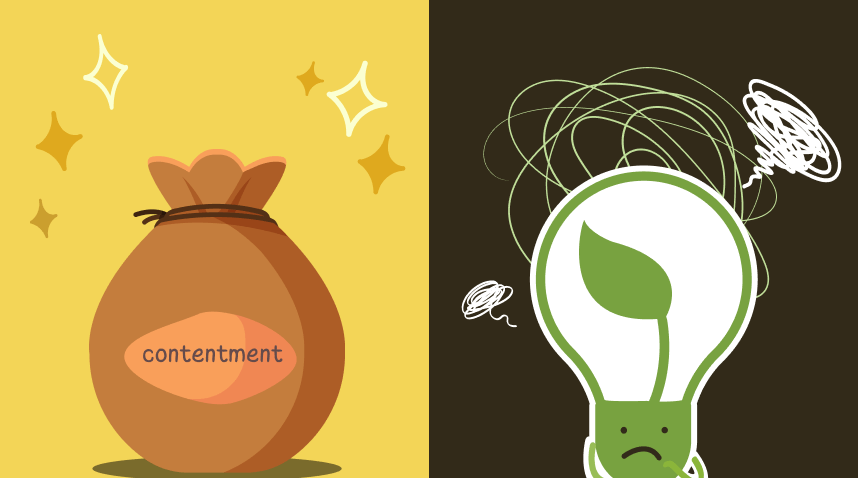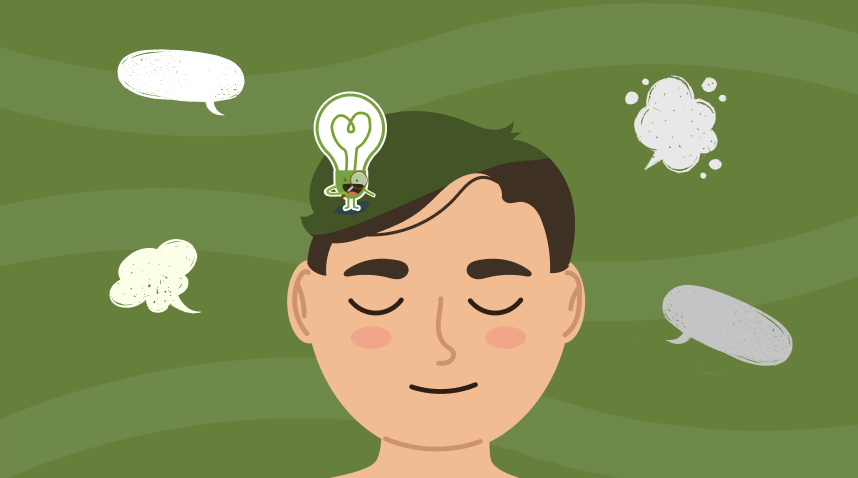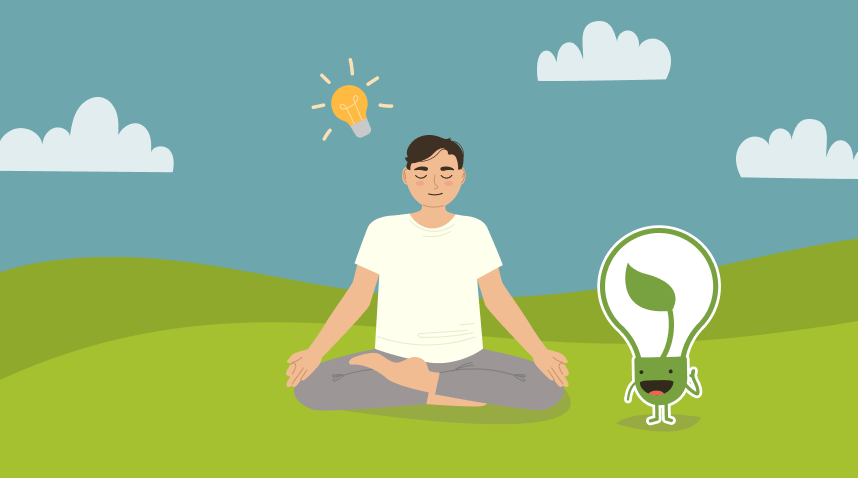Editor’s Note: This is a two-part series adapted and edited from PJ’s blog that captures his insights and reflections as he walks the path.
TLDR: Why ambition IS holding you back and how to cultivate true contentment. Explore 5 lessons from PJ’s 2 month Rains Retreat
I was on a meditation retreat from 29th September until 6th November 2023 at Jhana Grove. It was especially fruitful during my personal 3-week silent retreat, from 2nd to 23rd October: during those times, there were days when I literally said nothing aloud to anyone. It’s one of the most enjoyable periods in my life.
Here are some of my learnings, which I’m sharing here. Hopefully, these will be useful for some of you.
1. Contentment is the ultimate wealth; Sankhara is the ultimate suffering.

This first learning is taken from two sentences (from adjacent stanzas) in the Dhammapada: “Contentment is the ultimate Wealth” Dhp 204 and “Sankhara is the ultimate suffering” Dhp 203. (Sankhara refers to mental formations that persist in the way we interact with the world)
Before this retreat, I’d never really understood the idea of “contentment is the ultimate wealth”: it made no sense to me. If you’re contented, doesn’t that mean you won’t get more? So how can that be the ultimate wealth?
The best way to describe my new understanding is through the analogy of food (whatever is available in the five-sense world) and one’s stomach (mind).
- If your stomach is full, no matter how much is offered to you, you can’t stuff more into your stomach: it gets very uncomfortable. Similarly, when you’re content, your mind is “full” and you don’t want anything else. And as long as your mind is “full”, that is wealth.
- In contrast, imagine that no matter how much you eat, you will never feel full, but you will always feel hungry. In that analogy, your mind is never “full”.
Another analogy is that of financial credit & debt ratios: if you have equity of $1 and you’ve loaned $6, it’s not different from a billionaire (net worth $1bil) taking out a $6 billion loan. Contentment is removing all debt.
Shortly after my arrival at Jhana Grove, I asked my teacher Ajahn Brahm a question. How do I deal with the sense of ambition?
I’ve constantly struggled between the horns of a dilemma: on the one hand, I really appreciate the peace, calm and happiness from my Buddhist practice. On the other hand, I also have this strong sense of ambition, which manifests as a strong desire & inclination towards planning, doing, thinking, and writing.
Ajahn told me to ask myself “And then what?”, and to play things out to their logical conclusion. “What if my ambition isn’t for myself, but actually for the Buddhist community?”, I asked.
“That’s a bit of a bluff, “ he immediately replied.
“I’m sure every Buddhist community would prefer having one more contented, happy, peaceful and enlightened person. And if there were more contented, happy, peaceful persons, then I would have fewer questions to answer, and can go back to my cave earlier after lunch…” I got the hint, and took my leave. 🙂
What happened over the next few weeks really drove home the point. There were a few meditation sessions which were largely spent with my mind generating will, thoughts, plans, comments, and analyses.
Then, as I practised sense restraint (see next learning point), the thoughts, plans, comments, and analyses died out naturally, to be replaced by moments of stillness, quiet, peace and calm.
The peace and calm was so nice, in stark contrast to the previous stormy thoughts. It felt like I had travelled through the stormy part of a hurricane, only to enter its calm “eye”.
These experiences made me realize that contentment was about not-wanting, and that sankhara (which includes will, thoughts, plans, comments, analyses) was entirely driven by wanting and desire. And not-wanting was so much nicer! And then, suddenly one day, the two sentences from the Dhammapada made sense to me.
One day, after my restlessness had died out and my mind was again filled with calm, I suddenly had this terrifying question: how many lifetimes have I strived, thought, planned, commented, analysed and basically did things, instead of being contented & still? That is still a thought which makes me shudder. The insight has started to turn me away from my thoughts. I’ve also started to place less weight on the value of my thoughts, opinions etc., as there are intrinsic defilements within thoughts and perceptions.
TLDR – contentment is the way to Nibbana. And any kind of willingness to planning is suffering.
2. The suttas aren’t the Dhamma: they point to the Dhamma, but are not the Dhamma itself.
This point can be confusing, but basically, the suttas spell out the Dhamma, but they are NOT the Dhamma. Their relationship with the Dhamma is more like this:

It’s in the same way that a restaurant menu (or picture) points to the actual food, but is NOT the actual food. Eating the menu wouldn’t really help you get full: similarly, just eating the suttas (and its concepts) will not get you full. Instead, it will just drive you around and around and around in a whirl of conceptual proliferation…
So while the suttas are very important, one needs to have the wisdom to recognise that they are not the same thing as the Dhamma.
The Dhamma needs to be realised within each and everyone of us, and the only way to realise the Dhamma, is through practising the whole Eightfold Path. Reading/listening/asking questions/debating about concepts like dependent origination is potentially a very big and dangerous distraction.
Because many people simply go around in circles, rather than directly realising the Dhamma (i.e. going inwards).
TLDR – Suttas are important, but they are the menu, not the food.
3. Don’t get caught up in the features and details of one’s perceptions, and don’t get dismayed!

A sutta which resonated with me during this retreat was AN4.14 Restraint. This text has parallels in Gandhari and Chinese, so it is probably quite reliable.
The excerpt which resonated with me was this:
“When a mendicant sees a sight with their eyes…When they hear a sound with their ears … When they smell an odour with their nose … When they taste a flavour with their tongue … When they feel a touch with their body … When they know an idea with their mind, they don’t get caught up in the features and details.
If the faculty of sight/sound/smell/taste/touch/mind were left unrestrained, bad unskillful qualities of covetousness and displeasure would become overwhelming.
For this reason, they practice restraint, protecting the faculty of sight/sound/smell/taste/touch/mind, and achieving its restraint. They don’t get caught up in the features and details. If the faculty of sight/sound/smell/taste/touch/mind were left unrestrained, bad unskillful qualities of covetousness and displeasure would become overwhelming. For this reason, they practice restraint, protecting the faculty of sight/sound/smell/taste/touch/mind, and achieving its restraint. This is called the effort to restrain.“
But why should we practice sense restraint? Another sutta SN46.6 To Kundaliya (with a Chinese parallel) explains this:
Buddha: “The benefit the Realized One lives for, Kuṇḍaliya, is the fruit of knowledge and freedom.”
Kundaliya: “But what things must be developed and cultivated in order to fulfill knowledge and freedom?”
Buddha: “The seven awakening factors.”
Kundaliya: “But what things must be developed and cultivated in order to fulfill the seven awakening factors?”
Buddha: “The four kinds of mindfulness meditation.”
Kundaliya: “But what things must be developed and cultivated in order to fulfill the four kinds of mindfulness meditation?”
Buddha: “The three kinds of good conduct.”
Kundaliya: “But what things must be developed and cultivated in order to fulfill the three kinds of good conduct?”
Buddha: “Sense restraint. And Kuṇḍaliya, how is sense restraint developed and cultivated so as to fulfill the three kinds of good conduct? A mendicant sees an agreeable sight with their eye.
They don’t desire it or enjoy it, and they don’t give rise to greed. Their mind and body are steady internally, well settled and well freed. But if they see a disagreeable sight they’re not dismayed; their mind isn’t hardened, dejected, or full of ill will. Their mind and body are steady internally, well settled and well freed.”
So it is clear that sense restraint is necessary for liberation. And, when sense restraint is done right, it is actually pleasurable: the mind isn’t dismayed, hardened, dejected or full of ill will.
This is particularly important to note, because many people take a “hear no evil, see no evil, say no evil” approach to sense restraint, using a lot of willpower and force. They also often get dismayed: “Why am I craving this so much??” and don’t realise that they have taken the wrong approach to sense restraint.
TLDR – Don’t grasp at the features and details of whatever you perceive. Just acknowledge and let go.
4. The fuel for restlessness is focusing on one’s restlessness. Focusing on one’s settled mind starves future restlessness (SN46.51)
Another text which resonated with me was SN46.51, which describes (in some detail) the causes for the Five Hindrances & Seven Enlightenment Factors. It’s a relatively longer text.
The particular excerpt which resonated was this excerpt, explaining that the more you focus on restlessness, the more that fuels restlessness:
There is the unsettled mind. Frequent irrational application of mind to that fuels the arising of restlessness and remorse, or, when they have arisen, makes them increase and grow.
The opposite (which starves restlessness) is to focus frequently on the settled mind:
There is the settled mind. Frequent rational application of mind to that starves the arising of restlessness and remorse, or, when they have arisen, starves their increase and growth.
There is tranquility of the body and of the mind. Frequent rational application of mind to that fuels the arising of the awakening factor of tranquility, or, when it has arisen, fully develops it.
Taken in totality, this means that after meditation, it is less important to focus on one’s restlessness, and much more productive to focus on the moments of peace (no matter how short!) one experienced in the meditation.
TLDR – Water your flowers, not your weeds.
5. Listen and adjust, all the time.

This was a personal learning. At the start of my retreat, I decided that, instead of forcing myself and using will, I would instead just play by ear, and just continuously listen to my body and mind, and adjust to its needs (not wants!), all the time. It was a form of applying mindfulness and kindness.
Quite often, I would sit and my body would end up feeling slightly tense (especially around my lower spine, back and neck). In the past I would “tough it out” by telling myself to ignore the discomfort, to “let it go”… and end up being in even more discomfort!
This retreat, I would note the discomfort, and instead of toughing it out, I would then gently and subtly adjust my posture a little bit. And every day, I was listening and watching my own mind and body, seeing what both needed.
There was one day when I struggled with meditation: I woke up late and really struggled with sleepiness the whole day. In the evening, as I was writing in my diary, I realised I was extremely tired: so I went to bed at around 6pm, and just slept. The next day, everything felt normal.
In retrospect, I wonder if my body was not feeling well that day, and I had listened to my body’s needs: as a result, I didn’t fall sick the whole five weeks, even though I was in close contact with a few Covid patients in the last week.
TLDR – be kind to your mind and body, at every moment
Thank you for reading! Stay tuned for Part II


